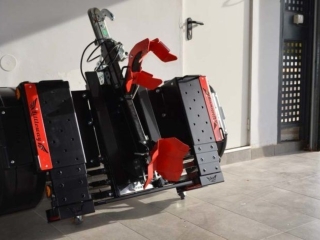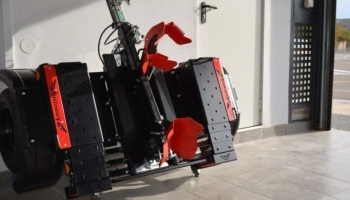Key components of trailer brakes

One of the vital factors when towing a trailer is the brakes it incorporates. These, like any other brake, are responsible for reducing the trailer's inertia when the towing vehicle slows down. This helps to prevent the trailer from colliding with a car or obstacle. Knowing how the brakes work helps identify potential failures and prevent any issues during a journey.
Below, we analyze the main features and recommendations to know about the operation of a trailer's brakes and their components.
Inertial Mechanical Brake System
This technology is one of the most commonly used braking systems. It stands out for its simplicity, ease of maintenance, and low cost. It is called inertial because it is the trailer's inertial movement that activates the brakes. This type of braking system can be used with loads ranging from 500kg to 3500kg, depending on the model used in these cases.
When the vehicle begins to brake, a braking force is generated at the coupling point, which causes the movement of the drawbar. This activates the brake cables, thereby stopping the trailer's movement.
Components of Mechanical Brakes
Knowing the components of a trailer's mechanical brakes allows for the detection of possible failures in their operation and helps prevent the problem from worsening.
Locking Device
The locking device of the brakes is the mechanism that connects to the towing vehicle. It usually incorporates a stabilizing system instead of the usual locking systems. When the connection is made, the trailer ball must be free of grease to avoid any issues in this area.
Push Rod
Located in the brake body, its movement activates the transmission lever, initiating the braking of the trailer. This element requires regular lubrication to move freely. Lubrication can be done manually or injected through the incorporated valves.
Shock Absorber
This brake shock absorber is responsible for reducing the inertial force acting on the rod so that the impact on it is much less. If you feel bumps in the vehicle while braking, it means the shock absorber is not functioning correctly and, therefore, is not reducing the trailer's force.
Transmission Arm
This is the connection point between the inertial braking system and the brake rod. Its shape and diameter depend on the mass of the trailer, as it is a sensitive part that can suffer breakage.
Safety Cables
Their function is to activate the trailer's emergency brake. It is connected to the handbrake at the bottom and attaches to the trailer ball via a carabiner.
Rubber Bellows
The rubber bellows of a trailer's brakes protect the stem from dust, water, and grease. It is advisable to check their attachment and condition to ensure there are no breakages.
Handbrake
The inertial braking system incorporates a handbrake that allows you to modify the transmission lever, thus locking the wheels when the trailer is parked.






